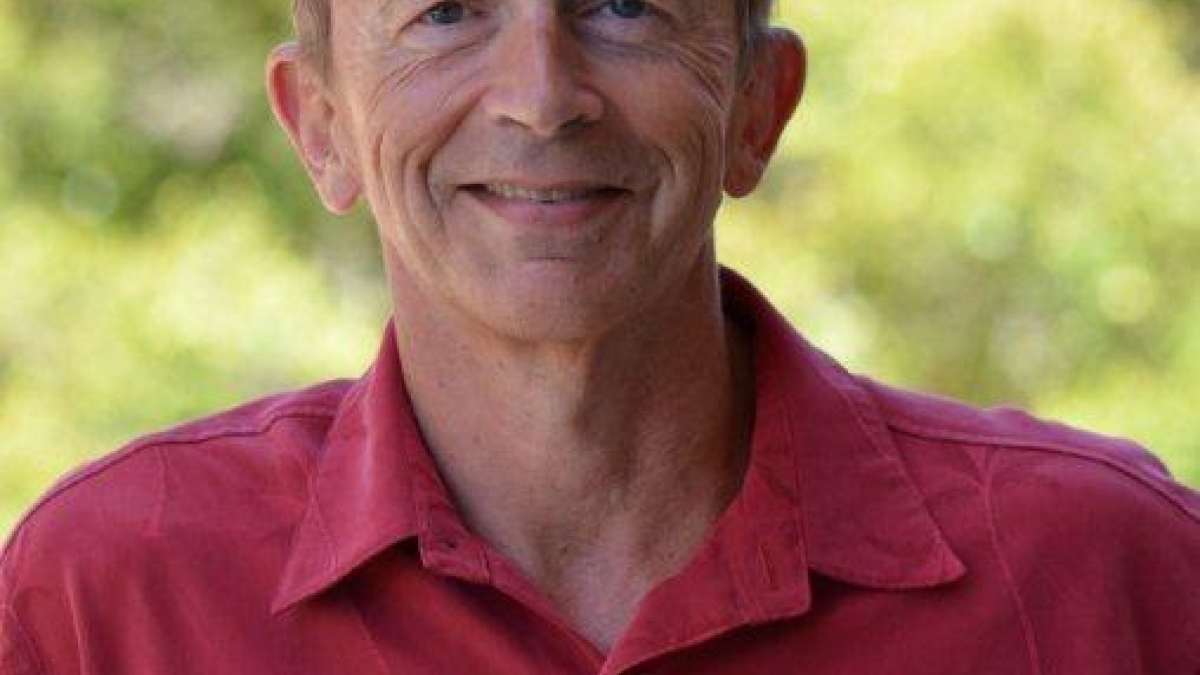Sky's no limit for School of Life Sciences' new director

How do you lead an academic unit ranked 21st in the world in biological sciences? With pleasure, says Brian H. Smith, a professor of neuroscience and the new director of the School of Life Sciences at Arizona State University.
“School of Life Sciences flourished under the leadership of founding director Robert E. Page Jr.,” Smith said. “To build on this school’s strengths – remarkable faculty and highly collaborative, interdisciplinary framework – is a unique and exciting opportunity.”
Smith came to ASU in 2005 from Ohio State University where he served for 15 years as a professor in the Department of Entomology, with joint appointments in the Department of Evolution, Ecology and Organismal Biology and the Department of Psychology. Smith also was a member of OSU’s Neurobiotechnology Center, Mathematical Biosciences Institute and Neuroscience Graduate Studies Program. There, Smith also founded a class on extreme sports through OSU’s School of Physical Activity and Educational Services. A skydiver since the age of 16, Smith was interested in educating students about the physical and psychological benefits and challenges of pursuing extreme sports, such as skydiving and open water swims, Smith’s present pursuit.
At ASU, Smith’s desire to embrace new challenges, combined with his relationships with research partners – such as the Barrow Neurological Institute – and his exemplary research profile and early experiences with neuroscience graduate program development all have made him a stand-out as ASU’s director for the development of the Interdisciplinary Graduate Program in Neuroscience.
Approved by the Arizona Board of Regents in 2008, this collaborative program’s success laid the foundation for Smith’s appointment to the ASU President’s Faculty Advisory Committee and his subsequent selection as a leadership fellow in the Office of the Provost, where he has worked to help advance the development of online programs at ASU.
“Brian is an accomplished researcher, an outstanding teacher, and a fantastic academic citizen,” said Page, now vice provost and dean of the College of Liberal Arts and Sciences. “I have watched his career flourish and admire his ability to stay on the cutting-edge by building consortia to tackle important questions. His breadth in biology and ability to build consensus will make Brian an outstanding director of the School of Life Sciences.”
As director, Smith will pursue new initiatives that advance awards of large multidisciplinary, collaborative research grants; new technologies to enhance classroom education; and innovations in graduate student training, including addition of art, design and creative, scientific communication strategies. Just months into his new position, Smith already has built new ties with ASU’s Herberger Institute of Design and the Arts and the InnovationSpace program, an “entrepreneurial venture that teaches students how to develop products that create market value while serving real societal needs and minimizing impacts on the environment.” InnovationSpace was built in partnership with the Ira A. Fulton Schools of Engineering and the W.P. Carey School of Business.
With extensive experience with multidisciplinary, multi-institutional, multi-generational research collaborations, Smith’s own recent scientific venture combines insects and human health, neuroscience and national security, funded by a large collaborative, multidisciplinary grant from the Department of the Navy. Smith is one of a team of scientists and students in math, physics, biology and robotics working to develop “sniffers,” or “nose drones” – small autonomous robotic devices that sense volatile chemicals, poisons and neurotoxins. Smith and his partners at University of California, San Diego and Riverside, and the California Institute of Technology, will translate understanding about insect neural systems, in this case Smith’s own study subject, honey bees, and the principles of sensory recognition into algorithms, olfactory models and software that can rapidly identify odors and assess their concentration and pilot remote, autonomous robotic devices.
An author of more than 80 journal publications, Smith is also an elected fellow of the American Association for the Advancement of Science. He has received a Fulker Award from the Behavior Genetics Association and a National Institute of Mental Health Nation Research Service Award. During his research career, he has mentored more than 18 undergrads, 15 graduate students and 17 postdoctoral fellows who have gone on to research positions in the United States, France, Germany, Argentina, Israel and United Kingdom.
Science Studio podcast: http://sols.asu.edu/podcasts/mp3_files/science_studio_vol_006.mp3